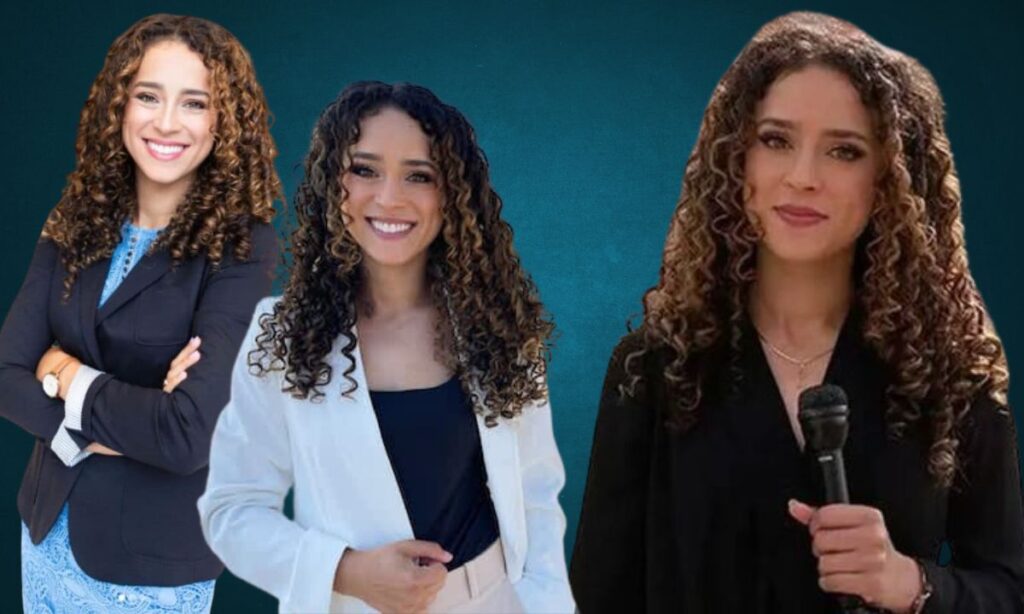In the digital age, misinformation spreads rapidly. One recent incident involved a deepfake video of podcaster Bobbi Althoff. This AI-generated content caused a stir on social media. Many users were confused about its authenticity. Bobbi had to step in to clarify the situation. The incident highlights the challenges of distinguishing real from fake media.
Breaking Down the Viral Incident

The viral incident began when a deepfake video of Bobbi Althoff surfaced online. It was first shared on niche message boards before quickly spreading to larger platforms like X (formerly Twitter). Within hours, the video garnered millions of views. The rapid spread of the video demonstrated the power of social media disinformation.
Many users struggled to determine if the video was authentic or fake. Bobbi initially thought her podcast was trending for positive reasons. However, she soon learned about the deepfake controversy. The video was so convincing that even her PR team had to verify its authenticity.
The incident sparked widespread discussion about the dangers of deepfake technology. Social media users reacted in various ways, with some expressing outrage and others sharing the content further.
How the Bobbi Althoff Deepfake Started?
The controversy began when a deepfake video of Bobbi Althoff surfaced. It appeared first on niche message boards. Soon after, it spread to larger platforms like X (formerly Twitter). The video seemed so real that many viewers believed it was genuine. This raised immediate concerns about digital authenticity.
Rapid Spread on Social Media Platforms
Within hours, the fake video gained millions of views. It quickly went viral, demonstrating the power of social media disinformation. Users shared the video widely, amplifying its reach. The rapid spread made it difficult for anyone to verify the content. Many people questioned whether it was fabricated or real.
Public and Media Reactions to the Viral Video
The public reaction was mixed. Some were outraged, while others were curious. Media outlets picked up the story, adding to the conversation. Bobbi’s fans expressed concern for her reputation. Many took to social media to voice their opinions. The incident sparked debates about the implications of deepfake technology.
Challenges in Verifying Authenticity
Verifying the authenticity of the video was a significant challenge. Traditional methods of detection were not effective. Users could not rely on visual cues like unnatural movements. The sophistication of AI video manipulation made it harder to identify fakes. This incident highlighted the urgent need for effective fake content verification tools.
Read This Blog: Fashion 6 Cell 10.8v 4001mah-5000mah Replacement Laptop Battery For Asus
Technology Behind the Deception

The technology behind the Bobbi Althoff deepfake involves advanced AI techniques. Deepfake technology uses machine learning algorithms to create realistic media. Generative Adversarial Networks (GANs) are central to this process.
These networks consist of two neural networks competing against each other to produce authentic-looking content. The creation of a deepfake generally follows several steps. First, data collection and preparation are necessary. This involves gathering images and videos of the target individual.
Next, face alignment and landmark detection are performed. This step ensures that the AI can accurately map facial features. Following this, feature extraction takes place to identify key attributes of the face.
AI Techniques Used in Creating Deepfakes
The technology behind the Bobbi Althoff deepfake involves complex AI techniques. These methods allow for the creation of realistic synthetic media. Advanced algorithms manipulate video content in a convincing way. This raises ethical concerns about AI-generated content.
The Role of Generative Adversarial Networks (GANs)
Generative Adversarial Networks (GANs) are central to deepfake technology. GANs consist of two neural networks that work against each other. One generates fake content, while the other evaluates its authenticity. This competition improves the quality of the generated media. The results can be strikingly realistic, making detection challenging.
Steps Involved in Deepfake Creation
Creating a deepfake involves several steps. First, data collection is necessary. This includes gathering images and videos of the target person. Next, face alignment and landmark detection are performed. This ensures accurate mapping of facial features. After that, the actual face-swapping occurs, where one face is placed onto another body. Finally, post-processing enhances the video’s quality.
Difficulties in Detecting Manipulated Content
Detecting manipulated content is increasingly difficult. As deepfake technology advances, traditional detection methods struggle. Visual authenticity markers like blinking patterns are no longer reliable. AI-driven deepfake tools can create content that appears genuine. This evolution presents cybersecurity challenges for users and platforms alike.
Also Read This Blog: Bageltechnews.com Tech Updates: Insights, News, and Trends
Legal and Ethical Implications

The incident involving Bobbi Althoff has raised crucial legal and ethical questions. Current laws often lag behind rapidly evolving technology. This gap has significant implications for individuals and society. Non-consensual media sharing is a primary concern, especially in the context of deepfakes.
Recent studies indicate that a large percentage of deepfakes involve explicit content. In response to these challenges, new online safety legislation is emerging. For instance, the UK’s Online Safety Act 2023 aims to address deepfake abuse.
This law imposes criminal penalties for sharing intimate deepfakes without consent. It removes the burden of proving intent to cause distress. This shift is significant for protecting individuals from digital exploitation.
Gaps in Current Legal Frameworks
The Bobbi Althoff incident exposes significant gaps in legal frameworks. Existing laws often do not cover the complexities of deepfake technology. Many regulations lag behind the rapid pace of AI advancements. This leaves individuals vulnerable to non-consensual media sharing and digital exploitation.
Highlights of the UK’s Online Safety Act 2023
The UK’s Online Safety Act 2023 aims to address these gaps. This legislation includes provisions to combat deepfake abuse. It imposes penalties for sharing intimate deepfake content without consent. The law also streamlines the process for prosecuting offenders. This is a crucial step toward enhancing online safety.
Ethical Concerns Surrounding Deepfake Technology
Ethical concerns about deepfake technology are widespread. The potential for misuse raises alarms about online reputational risks. It is essential to consider the implications of AI-generated content. Ethical AI use requires responsible development and deployment of these technologies.
Responsibilities of Social Media Platforms
Social media platforms have a responsibility to combat deepfakes. They must enforce content moderation policies effectively. This includes removing harmful or misleading content promptly. Platforms should also invest in fake media detection tools. By doing so, they can protect users from disinformation.
Frequently Asked Questions
What is deepfake technology?
Deepfake technology uses AI to create realistic videos by replacing one person’s likeness with another’s. It raises concerns about digital authenticity and misinformation.
How did the Bobbi Althoff deepfake gain attention?
The deepfake gained attention when it was shared on niche message boards before spreading to larger platforms. Its realistic appearance led to widespread sharing and confusion.
What role do GANs play in deepfake creation?
Generative Adversarial Networks (GANs) are used to generate and evaluate fake content. They improve the quality of deepfakes by having two neural networks compete against each other.
What are the challenges in detecting deepfakes?
Detecting deepfakes is challenging due to their realistic appearance. Traditional visual cues are often unreliable, making it essential to develop advanced detection tools.
How does the UK’s Online Safety Act address deepfakes?
The UK’s Online Safety Act criminalizes the sharing of non-consensual deepfake content. It provides legal protections for individuals against digital exploitation.
Conclusion
The Bobbi Althoff deepfake incident underscores the impact of AI video manipulation. It raises critical questions about digital authenticity and online safety. As deepfake technology evolves, so must our strategies for detection and regulation. Legal frameworks and ethical guidelines need to keep pace with these advancements.
Collaboration among technology companies, lawmakers, and users is essential for creating a safer digital environment. Addressing the challenges posed by deepfakes is crucial for protecting individuals and maintaining trust in online content.
Tech innovator and digital explorer Ellia leads TechSloby, bringing cutting-edge insights to fellow enthusiasts. With a passion for demystifying complex tech concepts, she bridges the gap between innovation and understanding.



